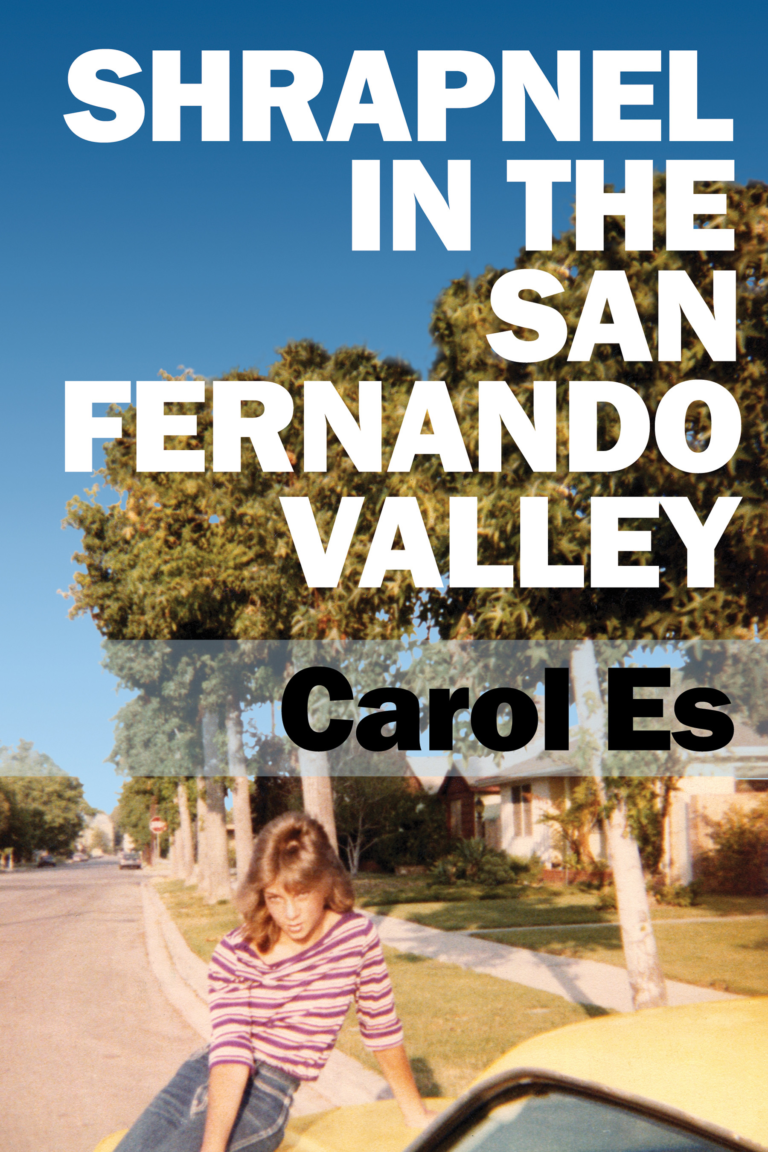SHRAPNEL IN THE SAN FERNANDO VALLEY covers events during the period 1973-2009, stretching from author Carol Es’s early childhood to the time when she begins to come into her own as a prolific, award-winning visual artist. The book begins near the end of this period, with Es’s father’s final illness. She uses her father’s passing, recounted with memorable language and even self-deprecating humor, to highlight the emotional turmoil brought on not just by her father’s death but also by her fraught relationships with her brother and her mother. Es then backtracks to tell the story of what led up to this difficult moment, which she will return to, from another perspective, toward the conclusion of the memoir.
Es was shaped by disruptive, often traumatic experiences from early on—from her parents’ volatile relationship and the family’s frequent moves, to her mother’s especially damaging words and actions (many of them attributable to mental illness), to being raped, starting at age 12, by a much older friend of her brother’s. The memoir suggests how the vulnerability that resulted from these experiences primed Es for indoctrination into Scientology, to which she was introduced by another friend of her brother’s who happened to be the nephew of the actor John Travolta. Through it all, however, Es remained dedicated to the pursuit of musical excellence, honing her skills as a drummer through constant practice. Later chapters detail the ups and downs of the five years she spent as the drummer for a rock band called The Extinct.
Some of the most compelling pages of the memoir are those in which the author provides an insider’s account of Scientology—its global reach, its doctrines, and its practices. Es spent decades embroiled with this organization, and readers unfamiliar with other exposés are likely to be shocked by her description of practices such as “auditing” (with or without “e-meters”), “Fair Game,” and “Purification Rundown.” In a moving chapter late in the book, the author recounts how she was impacted by the realization that she could no longer participate in these practices, and that so much of her life had been devoted to an institution she came to see as fraudulent and destructive.
But SHRAPNEL IN THE SAN FERNANDO VALLEY ends on a high note. With Es having finally found a supportive life partner who has her best interests at heart, she turns from playing music to creating visual art. Although not all is smooth sailing in the closing chapters—her brother continues to struggle with drug addiction, her mother develops Lewy body dementia, and Es herself experiences major health challenges—the memoir is a testament to the author’s perseverance in the face of adversity, not to mention her continuing capacity to take joy from others’ as well as her own successes.
Carol Es really did encounter SHRAPNEL IN THE SAN FERNANDO VALLEY—familial, psychological, job-related, and other—but she has lived to tell about it in this well-paced, captivating memoir, a transcendent story about how fostering one’s own creativity affords resilience and the means for survival.
~David Herman for IndieReader


